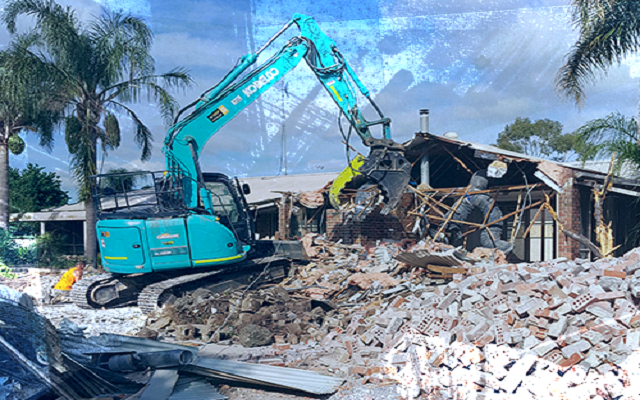Bulk excavation is a common technique used in construction projects to remove large quantities of soil, rock, or other materials from a site. It is an essential process that enables the construction of buildings, highways, and other structures on otherwise unmanageable terrain.
In this blog, we will delve into the details of bulk excavation and discuss its different methods, equipment used, safety measures, and environmental impact.
Understanding Bulk Excavation
Bulk excavation involves the removal of large volumes of material from a site to create a level surface for construction activities. It is typically done for foundation work, basement construction, or creating space for underground utilities such as sewers and pipelines.
The amount of material removed during bulk excavation can range from a few thousand cubic meters to millions of cubic meters, depending on the scope of the project. This process is usually done at the beginning of a construction project and may take several months to complete.
Methods of Bulk Excavation
There are two primary methods used for bulk excavation: traditional mass excavation and top-down cut-and-fill.
Traditional Mass Excavation
Traditional mass excavation involves digging down to the desired depth, removing all materials from the site, and then backfilling with engineered fill. This method is suitable for projects where a large amount of material needs to be removed, and there is enough space around the site to stockpile excavated material.
Top-Down Cut-and-Fill
Top-down cut-and-fill, also known as overburden removal, involves removing the top layer of soil and rock and stockpiling it nearby for later use. After the initial layer is removed, excavation continues in a top-down manner, with each new section being backfilled with the material from the previous section.
This method is preferable when there is limited space around the site for stockpiling, and the excavated material can be reused for backfilling.
Equipment Used for Bulk Excavation
The type of equipment used for bulk excavation depends on the nature of the materials being removed and the site’s size. Some of the commonly used equipment includes:
- Excavators: These are versatile machines used to dig and load materials onto trucks. They come in various sizes and can be equipped with different attachments for specific excavation tasks.
- Bulldozers: These are powerful machines used to push large quantities of soil, rock, or debris. They are commonly used in mass excavation projects.
- Dump trucks: These are heavy-duty vehicles used to transport excavated material from the site to a designated location for disposal or reuse.
- Scrapers:These are self-propelled machines used for excavating, loading, and hauling soil or other materials.
Safety Measures for Bulk Excavation
Bulk excavation can be a hazardous activity if not properly managed. Therefore, it is essential to implement strict safety measures to protect workers and the surrounding environment. Some of these measures include:
- Conducting thorough site assessments before starting any excavation work to identify potential hazards and implement appropriate control measures.
- Providing proper training and personal protective equipment (PPE) to all workers involved in the excavation process.
- Regularly monitoring the site for any changes or potential risks, such as unstable soil conditions or underground utilities.
- Maintaining clear communication between workers, supervisors, and other construction teams on-site to ensure everyone’s safety.
Environmental Impact of Bulk Excavation
Bulk excavation can have a significant impact on the surrounding environment, which is why it is crucial to carefully plan and manage the process. Some potential environmental impacts include:
- Soil erosion: The removal of large quantities of soil can cause erosion, leading to water pollution and loss of fertile land.
- Air pollution: Heavy machinery used in bulk excavation can emit pollutants into the air, contributing to air pollution.
- Noise pollution: Excavation activities can create excessive noise levels, disrupting nearby communities and wildlife.
To mitigate these impacts, measures such as dust control, proper waste management, and noise reduction techniques should be implemented during the excavation process.
Conclusion
Bulk excavation is a critical step in construction projects that requires careful planning, execution, and management. By understanding the different methods, equipment used, safety measures, and environmental impact of bulk excavation, construction teams can ensure a successful and sustainable project. It is essential to work with experienced professionals in this field to carry out bulk excavation activities efficiently and safely. So, always choose wisely! Armstrong Demolition are the experts in residential demolition, excavation services Melbourne and asbestos removal. Our team is always committed to providing you with the best service possible for your excavation project



